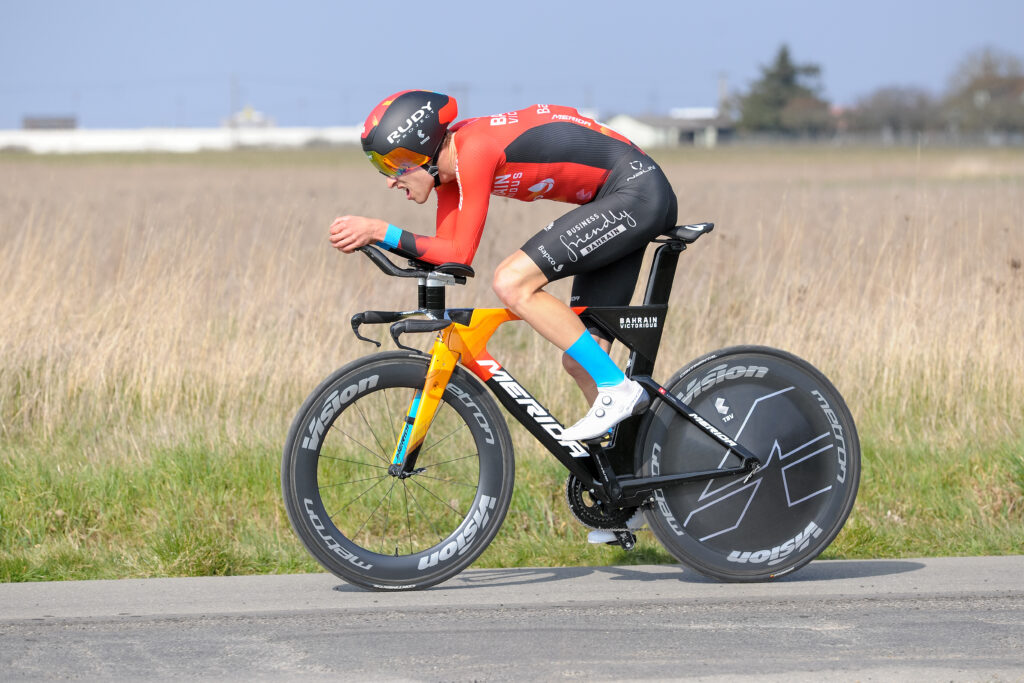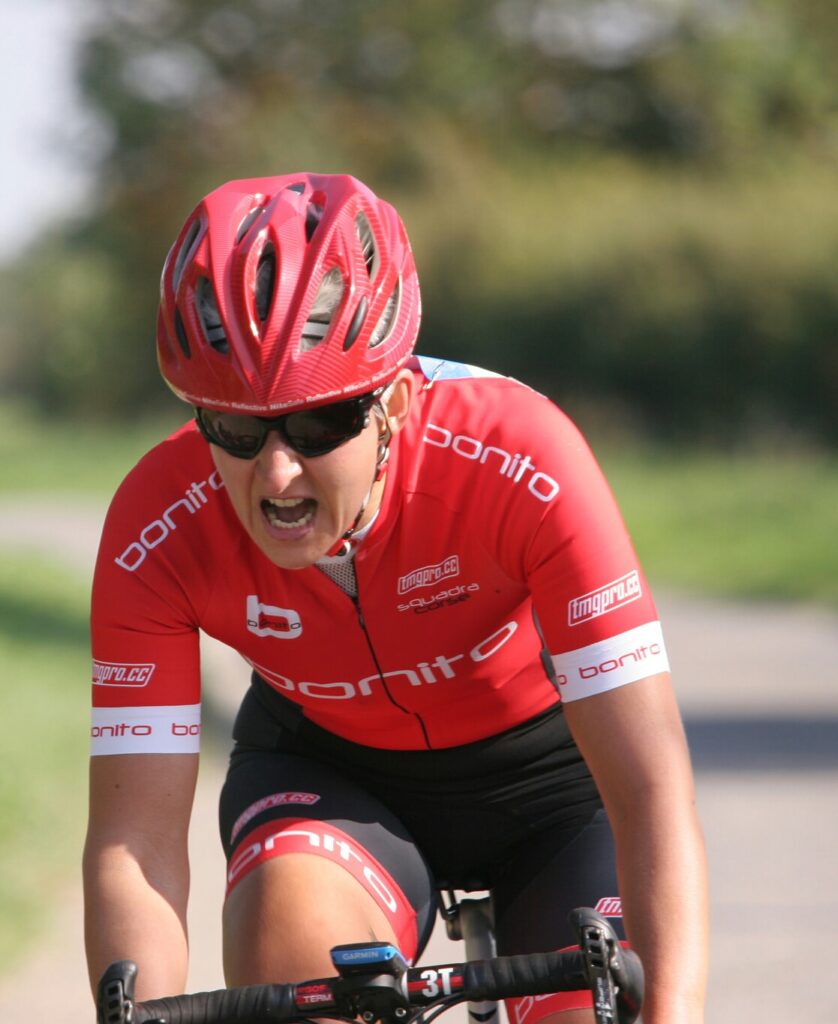
Read my quick guide to cycling threshold training to understand how I, as a cycling coach, use this popular technique.
In my last post I wrote about my approach to polarized training, having used this method for twenty years. However, I did point out that, although polarization works for most people, it isn’t suited to all cyclists. This is why I tailor coaching to the individual rather than blindly following a single method.
What is cycling threshold training?
I have previously discussed the difference between threshold and polarized training, so I won’t go into too much detail here. Simply, threshold models differ from polarized training in that there is more medium intensity training (MIT) at, or just below, the anaerobic threshold (AnT).
AnT can be found using an exercise test with measurements of blood lactate. However, most cyclists perform a functional threshold power (FTP) test to estimate AnT. These two measures aren’t strictly identical but, for all intents and purposes, they provide a similar measure. For simplicity, I am going to use AnT and FTP interchangeably in this article.
In contrast with threshold models, there is a greater emphasis on high intensity training (HIT) with a polarized approach. HIT is usually defined as intensities greater than AnT with heart rate within the range 87-95% of maximum heart rate. Again, you have to be careful with definitions because they can vary according to the sources you read.
I should add that, with both threshold and polarized models, the bulk of training is still made up of low intensity (endurance) training (LIT). The differences, as I have described, come from the intensity at which interval training is pitched.
Why the two approaches?
This is a good question because the threshold and polarized camps both claim greater improvements in fitness for the effort. Afterall, it’s important that if you are going to commit to exhausting training you want to maximize your returns. This leaves us in the curious position of both sides adamant that their approach is optimal. Is one side wrong, or can both be right?
I suspect the issue arises for two reasons. Firstly, there is enough difference between people that some respond better to one approach than another. I have seen this first hand with the cyclists I coach and is a reason why I prefer to individually tailor training.
Secondly, sports science is clearly still a long way from not only understanding the underlying characteristics for superior performance in a range of endurance sports, but also the optimal training prescription to develop those qualities. There is a long discussion to be had about why this is the case so I’ll leave that for another time.
Which zones should I use to perform cycling threshold training?
The term ‘threshold’ is actually a little misleading because there are two thresholds: the aerobic threshold (AeT) and the anaerobic threshold (AnT) that I mentioned above. When most people talk about cycling threshold intervals they are actually referring to AnT. I suspect most aren’t aware of AeT which is never measured if you set training according to FTP. I’ll briefly explain how these thresholds relate to training zones. I have included a table below for your reference.
AeT sets the upper limit of aerobic endurance training which is the top of Zone 2 in Andy Coggan’s system. There has recently been a lot of interest on social media about the benefits of Zone 2 training. I am surprised at this trend because Zone 2 has formed the bulk of endurance training programmes for decades!
MIT is performed in Zones 3 and 4, with AnT falling in the middle of Zone 4. This is where you’ll perform the bulk of your intervals if you follow a threshold cycling training model.
In contrast to threshold training, you’ll spend much more time in Zone 5 with a polarized approach. Your HIT or ‘VO2max’ intervals will be completed between 87 to 95% of maximum heart rate, so above AnT.

Finally, you may have heard of sweet spot training. This is a little below your FTP and it is thought by some, including Coggan, that exercising at this intensity gives optimal gains for the effort. Hence the name!
The target power output for sweet spot is 83-97% of FTP. Consequently, it straddles Zones 3 and 4.
What blood lactate concentrations should I target with threshold training?
If you use coaching software to set your zones from FTP you need do no more than perform a regular test and update the score. As your AeT isn’t measured directly, the software will estimate it as a percentage of FTP.

Should you go down the lactate route it’s possible to precisely determine AeT and AnT from an incremental exercise test. You can attempt this yourself, if you have a blood lactate meter, or you can visit your local sports science lab. Following the test, a plot can be made of exercise intensity versus blood lactate concentration. Your training zones can then be set upon either the shape of the curve or some fixed values. The fixed values approximating to AeT and AnT are usually 2.0 and 4.0 mmol/L.
As your blood lactate response to exercise will be different to others it is better to find AeT and AnT from the curve’s shape. You will then have heart rate, blood lactate concentrations and power values specific to you. However, the previous table does provide approximate blood lactate concentrations by zone.
How do I incorporate threshold training into my programme?
You will find that there are no hard rules with any form of training methodology. My advice is to broadly follow the principles of cycling threshold training and tweak it to your needs.
Threshold models generally follow a classic periodisation where base is first built, followed by an increase in MIT, then threshold, and finally some HIT. However, I do know of successful cyclists who do little or no HIT and use races to develop ‘top end’.
Building the base
Your Zone 2 rides are very important for developing aerobic endurance. You should also try improve your pedalling action with long periods at a high cadence (100 to110 rpm). Some proponents of cycling threshold training encourage pace variations in these long rides with efforts in Zone 3. This MIT training will constitute around 20-40% of your training, possibly more.
As you develop base you can consider introducing sweet spot training intervals. You can do this starting with short intervals of 5 minutes building to a continuous 15- or 20-minute effort. Once you can do this follow the same procedure to complete multiple 15- or 20-minute blocks.
Building strength
You can also incorporate low cadence strength training into your base. This has Italian origins and is known as Salite Forza Resistenza (SFR) which translates as ‘climbing force-resistance’. You’ll ride seated climbing repeats of anywhere from 1 to 5 minutes performed in a big gear on a 6-8% climb. Your heart rate should be around 15-20 beats below threshold, so within Zone 3. Again, contributing to your overall time spent at medium intensities.
Building cycling threshold training
Once you have a good base (according to the threshold approach) you can think about increasing cycling threshold training volume. Maybe you’ve already completed a little threshold training in the base period with occasional short 1 to 2 minutes efforts. Now incorporate one or two threshold sessions per week progressively increasing the interval length. For example: 10 x 4 min, 8 x 5 min, 5 x 8 min, 4 x 10 min, 2 x 20 min.
I think it is important at this stage to try to make your riding event specific. If you are a climber do your efforts on a hill and, if you are a time trial rider do them on the TT bike. Of course, if your aim is to compete in a mixture of events get used to doing your threshold efforts in all circumstances.
Is threshold cycling training suitable for eveyone?
I believe threshold cycling training is suitable for men and women of any age. Whatever your ability, you should find that threshold training improves your fitness.
Some researchers have questioned whether men and women should train the same way, and for good reason. However, there is limited research on training methods specifically for women and much of it is based upon animal studies. I think that in future we’ll know more, but for now I have trained women very successfully using both threshold and polarized approaches.
Remember to test
All being well, you should see your AnT/FTP increase over the course of the training blocks. So, it is worth doing a regular test to see how you are getting on. This could involve returning to the lab or completing another FTP test. However, with experience, you probably won’t need to test that often.
Threshold heart rate tends to be quite stable over time so you should see HR fall during all your sessions. By upping the power output to match your previous heart rate you’ll discover where your new threshold power is. The only caveat is that HR can fluctuate for a great many reasons including temperature, dehydration, fatigue, illness, phase of the menstrual cycle and the menopause. If you are sensible and keep good records with detailed information you’ll be able to unpick much of this.
Final word
As I commented earlier, I don’t think there is a single training approach that suits all cyclists. And I believe this is why there is so much conflict in the literature and on social media about the right way to train. In practice, coaching is a complex problem-solving activity where the ability to quickly learn is a key weapon in the coach’s armoury.
Whether threshold cycling training, polarized coaching or some other training methodology is optimal for you is something you can only learn from experimentation. So, commit to an approach and log all that you do keeping detailed notes on what works and what doesn’t. Over time you’ll discover the best approach, but do be patient. It can be a long journey but the rewards are definitely worth it.


